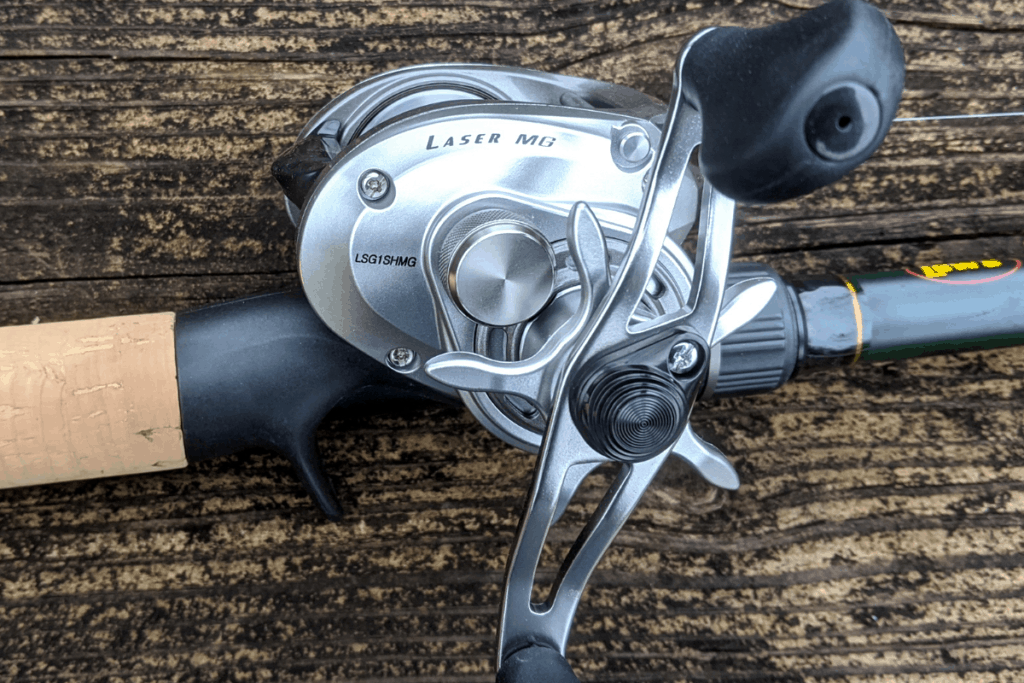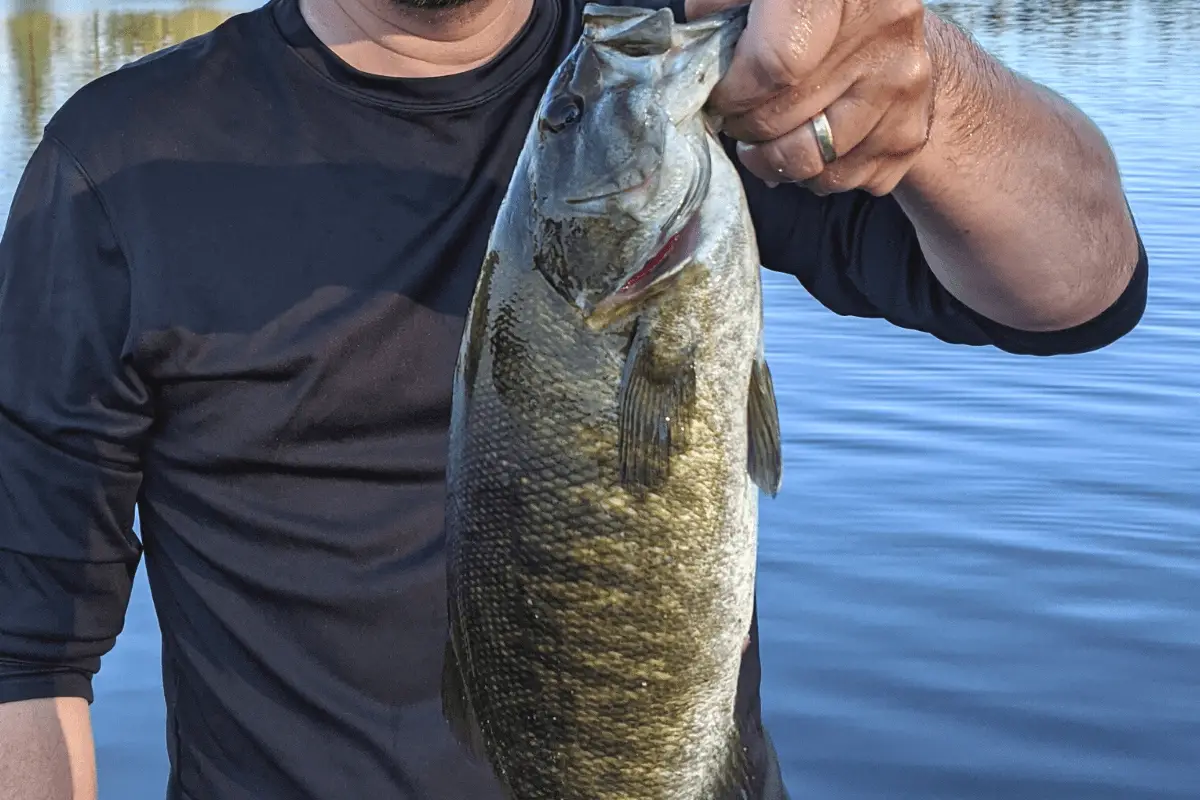Some days it seems that no matter what we do, the bass are willing to bite. Then there are those days where it appears all the bass have packed up and left the lake. These tips will help you get more fish on those outings when the bite is really tough.
To get more bites, bass anglers can do several things. One, use a smaller line diameter, impart less movement on the lure, and three, use a slower gear ratio reel.
In this article, I will talk about how all three of these simple methods work together to present a lure more naturally and therefore get more bites.
Line Diameter
There are times when the fish are really biting and line diameter appears to not make a difference, but when the bite is tough, downsizing can be the key between a good day and a bad one.
The clearer the water the more this has an impact.
In the video below, you can see that even to the human eye there is a noticeable difference in visibility underwater. When finicky bass get a close look at a lure it can turn them off if the bait doesn’t appear natural.
A huge deterrent in changing line size is because no angler wants to re-spool all the time. Line is expensive and the process is time-consuming.
The quickest way to solve that problem is to use a leader. On most of my reels, I will use braided line. At the end of it I like to tie on a 6ft leader of fluorocarbon. This leader can be changed quickly to suit the conditions you are faced with.
You may have been cranking away with 15lb fluoro on the leader one day, but when the bite gets tough you can downsize in just a few minutes and get right back to fishing.
Hookset with Lighter Line
It is critical to remember when you downsize the line the hookset method needs to change.
Heavier line can handle rip-lipping hooksets that bass anglers love to use when fishing lures like a jig. When the line is downsized the thought process behind a hookset needs to change.
The best method is to reel down the slack and impart a side-sweep motion. As long as pressure is applied, the fish should stay on.
Of course, using ultra-sharp light wire hooks will make a huge difference.

Subtle Movements
As anglers, all of us fall guilty when it comes to how much action we impart on our lures.
There are times when large, fast movements elicit reaction strikes. Remember, we are talking about those times when you get to the water and it seems like nothing will bite.
This is when we need to not overwork the lure.
I have actually gone outside with a tape measure and a 7’3” rod and figured out how much distance the rod tip covers when my wrist only moves two inches. The end of that rod moved over two feet!
That means with a small twitch of the wrist, the lure is hopping up to two feet or more. I don’t know about you, but I often move my wrist much more than two inches. I could be scooting that Texas rigged bait six feet at a time. How many crawfish do you see hop backward six feet? Twelve to twenty-four inches – yes. But not six feet.
That is how easy it is to overwork the lure.
When the conditions are tough and the bite is slow, we want to make the lure look as natural as possible. Overworking the bait is one way to turn off those finicky bass.
Do your best to visualize what the lure looks like under the water. Imagine a crawfish scooting along the bottom or a minnow ducking in and out of weeds. Subtle movements equate to more bites.
Drag the Lure
My absolute favorite way to fish a lure slowly with subtle movement is to drag it.
Any lure that you would normally bounce along the bottom is an ideal choice for this method. I like to drag Ned Rigs, Texas Rigs, and Jigs.
The technique is as simple as it sounds. Just let the lure drag. Co-anglers in bass tournaments have been mopping up from the back deck for years with this presentation. They just let the lure sink to the bottom and pull it.
Super easy and super effective.

Lower Gear Ratio Reels
One way that I can help myself control the speed at which I fish is to use low gear ratio reels.
The rage today is to use high-speed reels that are anywhere from 7.2:1 – 8.2:1. There are definite pluses to these reels and I use them for very specific presentations, but if you want to help yourself slow down switching to a low gear ratio reel is an easy way to do that.
RPT in the fishing world means Recovery Per Turn. A reel that has a ratio of 7.5:1 has a recovery rate of 30 inches per one revolution of the reel handle. That is a lot of line.
A reel with a gear ratio of 5.2:1 has an RPT of 21 inches.
Now think about how quickly most of us actually turn that reel handle.
Forcing yourself to slow down the presentation with a low gear ratio reel is an easy fix if you find yourself cranking away on the reel too quickly.
Final Thoughts
Every time I hit the water I hope for a day where the bass are aggressive and my job is easy.
Those days are rare.
Slowing down, presenting a lure naturally, and making subtle movements are all key factors to success on days when the bite is tough.
What are some of your favorite methods for catching bass on tough days? Drop a comment below.
Be safe, tight lines, and remember to encourage someone today. You never know how you might just change their life forever.
Isaiah 6:8

